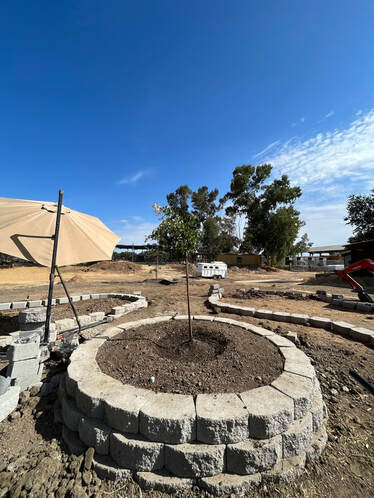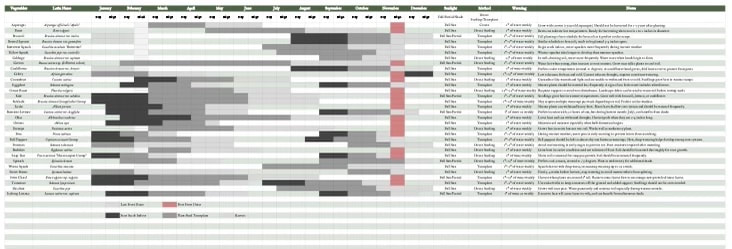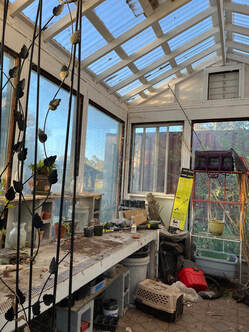|
Elizabeth Shin UC Davis undergraduate, 4th year Major: Landscape Architecture “In the woods, we return to reason and faith. There I feel that nothing can befall me in life, — no disgrace, no calamity (leaving me my eyes), which nature cannot repair” (Emerson, 1836). Nature has often been quoted as a remedy to fundamental human problems. Although research in the field now coined “Green Care” is relatively recent, the healing power of nature has never been questioned throughout history. In spite of this understanding, spaces lack the incorporation of nature in design, particularly in children’s play areas. With population spikes in cities due to “business and social opportunities offered to the people… open spaces that children can use are decreasing” (Acar, 2013). Traditional playgrounds consist of ready-to-play equipment, ranging from posts and decks, compound structures, nets, freestanding structures, and swings. On the other hand, natural playgrounds stimulate development beyond the physical, encouraging “social, emotional, and cognitive development through specific landscape interventions” (Herrington and Studtmann, 1999). In this blog, I will describe the specific natural design interventions I am proposing on the site — for children ages eight to twelve years old — that provide stimulation essential for development.
3 Comments
Elizabeth Shin UC Davis undergraduate, 4th year Major: Landscape Architecture New seeds and fresh soil from the garden I never liked plants when I was younger. To me, they were obstacles on hiking paths,
homes for bugs, and potential for skin rashes. I’m brought back to one memory as a child, when my brother accidentally touched poison ivy. He was practically unrecognizable by the time our hike was finished, his skin bumpy and red and his eyes swollen shut, a gross red monster in my eyes. I was so frightened by the sight of him that I even refused to sit next to him on the drive home. Elizabeth Shin UC Davis undergraduate, 4th year Major: Landscape Architecture Jose and Enrique in the ranch garden Jose grew up in Jalisco, Mexico. He has only been working on Pine Trails Ranch for the
past month, and plans to leave back home in the next three months. Via Dalia’s translations, I learned that his family lives in Mexico. He loves bull riding, motorcycles, music, and his cow! As he spoke to us, he excitedly swiped through his camera roll, showing us photos of his son with his horses, his friends riding a bull, and his cow that follows him everywhere. Despite not knowing Jose for very long, his caring attitude has manifested in so many different ways. For instance, offering us his home cooked meals for lunch, or grabbing us cold waters on hot afternoons. Elizabeth Shin UC Davis undergraduate, 4th year Major: Landscape Architecture The Crepe Myrtle in all its glory I wish I could say that my week at the ranch went smoothly. In truth, I consistently
snoozed through my alarm an average of seven times before I got out of bed. It became routine to chug my coffee and sprint out of the door to be on time. By Friday, I could hardly pick up a shovel without my shoulders pleading me to stop. This was my first week working full time, and it was a struggle just showing up for work, not to mention actually doing my job. Elizabeth Shin UC Davis undergraduate, 4th year Major: Landscape Architecture As we continue on our journey to create a garden designed for Green Care, I found
myself with a lot of questions and anxiety about its completion. What if something is wrong with my design? What if the plants don’t survive the sweltering heat of Davis? What if I’m doing something wrong? But the most pressing question of all, what if I fail? Elizabeth Shin UC Davis undergraduate, 4th year Major: Landscape Architecture My cute but needy dog While I was excited about the prospect of working from home, remote working came with its own set of challenges. For one, I have an extremely cute, but needy dog. I realized very quickly that me being home all day gave her the impression that I could give her all of my attention 24/7. I thought that working remotely would allow me to maximize my productivity and my time, which unfortunately was not the case for the first couple of days. She is extremely cuddly, which means her favorite place to sit is my lap. Luckily, I found tons of tips and tricks for distracting dogs online! Before I started my work, I would take her on a long walk with the intention of tiring her out. Aside from physical exercise, mental stimulation proved incredibly helpful for keeping her occupied. She loves Yak Chews and bully sticks!
Elizabeth Shin UC Davis undergraduate, 4th year Major: Landscape Architecture As Dalia and I brainstormed ideas for our garden beds, we realized very quickly that verbal explanations were not enough. We moved to graphic visualizations to communicate our ideas more accurately and effectively. I worked on creating a Sectional Perspective using various softwares such as Rhinoceros 3D, Adobe Illustrator, and Photoshop. Rhinoceros and Adobe Illustrator are vector-based softwares, meaning they create lines, points, curves, and shapes that are based on mathematical formulas. I utilized these programs to create 3D models of the Keystone Legacy Blocks we will be using for our garden beds. In contrast, Photoshop is a raster- based program, meaning it uses pixels to create detailed images. Through the help of these three softwares, I was able to build and render an image of our garden beds.
Elizabeth Shin UC Davis undergraduate, 4th year Major: Landscape Architecture In our third week, Dalia and I tackled creating an annual planting schedule. A planting calendar
is a guide that informs the user when the best planting time is for vegetables, flowers, or plants. Using the first and last frost dates (the first and last day when temperatures fall to 32 degrees or lower), the calendar maps out the optimal times to start seeds and plant. To find Davis’ frost dates, we used the USDA Plant Hardiness Zone Map to determine which plants will survive and thrive in our garden! Because Davis is in Zone 9b, the last frost date is usually around March 1st, and the first frost date is usually around December 15th. Knowing these dates will allow us to prepare for the frost ahead of time by bringing sensitive plants indoors and harvesting remaining fruits/vegetables. Elizabeth Shin UC Davis undergraduate, 4th year Major: Landscape Architecture Our second week at Pine Trails Ranch, Dalia and I took on the task of cleaning and organizing the greenhouse. The greenhouse on site is a single gable structure, with large glass panels spanning the length of the wall that let in plenty of sunshine during the day. We found an assortment of items inside, ranging from propagated plants, cat carriers, lithium batteries, and gardening supplies. But what surprised us most was the number of spiders living in the greenhouse. Despite being the “Garden Whisperers,” Dalia and I share an extreme fear of spiders. As we started clearing out boxes, we uncovered hundreds of daddy long legs, jumping spiders, black widows, and dozens more species that we had never seen before. Though we are reluctant to admit it, spiders are incredibly beneficial for controlling plant-damaging insects.
Elizabeth Shin UC Davis undergraduate, 4th year Major: Landscape Architecture When I was younger, my Korean grandmother would make annual summer trips to my family’s home in Central California. My favorite activity we did together was pick blueberries at Rancho Notso Grande, our local blueberry farm. We would spend hours plucking the fattest blueberries until our baskets were full and our backs were aching. I never learned to speak Korean, so our time spent together was always in silence. Despite the language barrier, gardening with my grandma built a long-lasting bond. I felt the most connected to her when we were outside, working and spending time together in the land. I attribute my love for plants to my grandmother. She taught me that gardening is not just about tending and cultivating plants, but tending and cultivating relationships with people and landscapes. The time I spent harvesting fruit with my grandma has become one of the fondest memories of my childhood, and my goal as “Garden Whisperer” is to share this experience with others.
|
Green Care Blog
Here you can find blog posts from each Green Care Lab intern. We'll be talking about our research process, the benefits of Green Care therapy, and sharing pictures of our work. Follow along with us! Authors
All
Archives
July 2023
|











